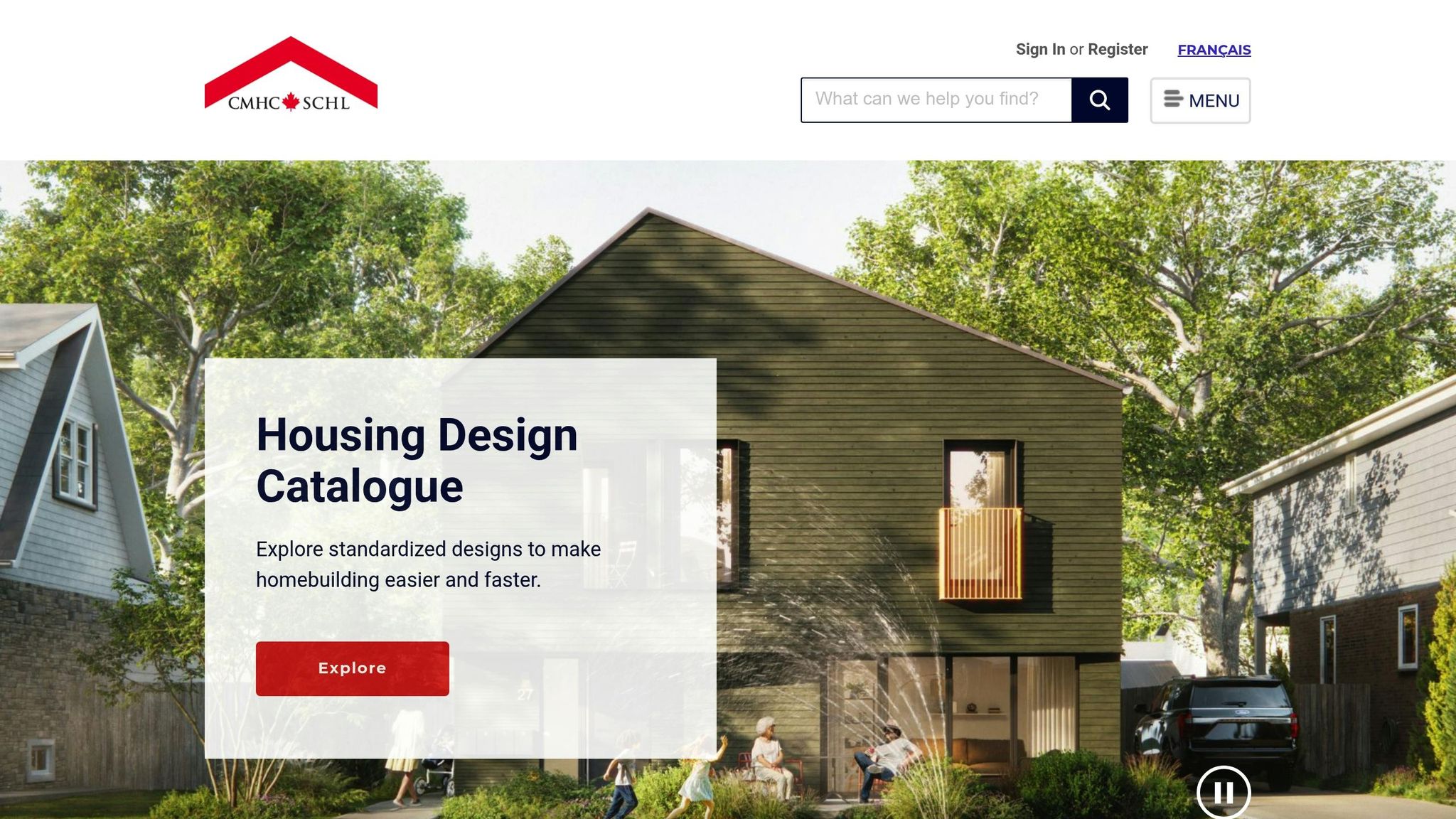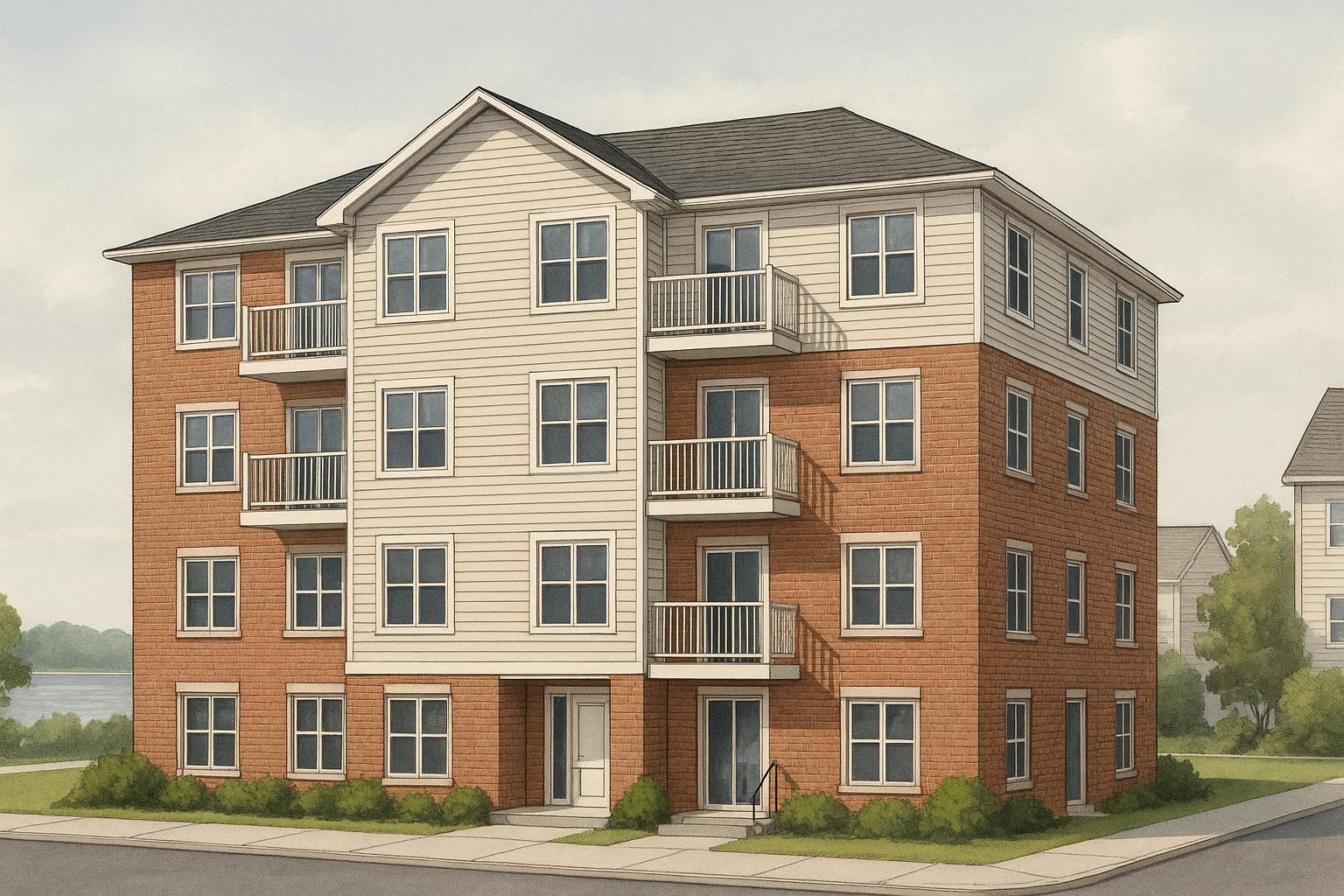Building a small multi-unit property in Nova Scotia? Here’s how to secure financing and maximize your returns.
To get the best financing for your project, focus on these key points:
- Construction Mortgages: Funds are released in stages (draws) as construction progresses, and you only pay interest on the amount you use.
- Rental Income: Pre-leasing units can boost your loan approval chances by proving market demand and income potential.
- Fixed-Price Contracts: These reduce lender risk and can lead to better financing terms.
- Government Programs: Options like CMHC’s MLI Select and provincial housing initiatives offer benefits like longer amortization and lower interest rates.
- Alternative Financing: Use home equity, investor partnerships, or private lenders for added flexibility.
Quick Tip: Nova Scotia’s strong rental market supports high occupancy rates and stable income, with construction costs ranging from $168/ft² to $220/ft². Plan carefully, secure a fixed-price contract, and prepare detailed financial documents to improve your chances of success.
Financing a Multi-family Building in Canada
Construction Mortgage Basics
Understanding how multi-unit construction mortgages work can help you secure the financing you need. These mortgages are designed to align with market conditions and allow for customized financing plans.
Payment Structure and Draws
Construction mortgages release funds in stages, known as draws. During the construction phase, you generally pay interest only on the funds you've accessed - not the entire loan amount. This can help you better manage your cash flow.
The draw schedule is tied to key construction milestones, such as:
- Completing the foundation
- Framing and roofing
- Interior rough-ins
- Finishing work
- Final completion
Before each draw, an inspection is required to confirm the work is complete. This phased approach ensures the lender can monitor progress while considering the projected rental income for the property.
Rental Income Considerations
Anticipated rental income plays a major role in getting approval for multi-unit construction mortgages. Lenders assess this potential revenue to determine whether the project is financially viable and can handle the debt.
Pre-leasing units is an effective way to show market demand and provide solid income projections. This approach has been especially useful for developers in Nova Scotia, where the rental market remains strong.
Getting Mortgage Approval
To secure a multi-unit construction mortgage, thorough preparation is essential. Fixed-price contracts are particularly helpful as they lower the lender's risk by ensuring cost predictability.
| Key Requirements | Importance |
|---|---|
| Fixed-Price Contract | Ensures predictable costs |
| Market Research | Supports rental income projections |
| Detailed Timeline | Demonstrates strong project planning |
| Financial Statements | Shows the borrower's financial capacity |
Pre-leasing units can also make your application more appealing by offering proof of rental demand and immediate income potential.
Government Financing Programs
Government programs in Nova Scotia offer financial support for multi-unit developments with terms that often surpass those of traditional loans.
CMHC MLI Select Benefits

The Canada Mortgage and Housing Corporation (CMHC) runs the MLI Select program, which provides financial incentives for multi-unit construction projects that meet criteria in areas like affordability, energy efficiency, or accessibility. Qualifying developers can access benefits such as longer amortization periods, reduced insurance premiums, and higher loan-to-value ratios. To qualify, projects must meet minimum standards in at least two of these categories. Beyond federal assistance, Nova Scotia also offers provincial programs aimed at affordable housing developments.
Nova Scotia Housing Programs
Nova Scotia builds on federal programs by offering additional funding options specifically for affordable multi-unit housing projects. These provincial programs provide financial incentives to developers who commit to maintaining affordable rental rates for a designated period. For detailed eligibility requirements and program specifics, developers should consult provincial resources.
Federal Funding Options
Federal funding complements provincial and CMHC initiatives by offering extra support for projects focused on energy efficiency and accessibility. Options include low-interest loans and capital contributions, which can make developments more cost-effective. Combining federal funding with other programs can help create a well-rounded financial plan for your project.
sbb-itb-16b8a48
Other Financing Methods
Beyond traditional mortgages and government programs, there are other ways to finance your multi-unit construction in Nova Scotia.
Using Home Equity
Your home equity can be a powerful tool for financing construction. You can choose between a Home Equity Line of Credit (HELOC) for flexible access to funds or cash-out refinancing for a lump sum.
Home Equity Line of Credit (HELOC): This revolving credit option allows you to borrow against your home's equity, offering competitive interest rates. A HELOC is particularly useful during construction because it lets you withdraw funds as needed, and you only pay interest on the amount you use.
Cash-Out Refinancing: With this option, you refinance your existing mortgage for an amount higher than what you currently owe. The difference is provided as a lump sum, which can be used for your project. This approach often comes with lower interest rates compared to standard construction loans.
Investor Partnerships
Partnering with investors can help share the financial load, as well as the risks and rewards. Common structures include:
Equity Partnerships: Investors provide capital in exchange for ownership shares. These arrangements require clear agreements outlining ownership percentages, roles and responsibilities, profit distribution, and exit strategies.
Silent Partnerships: In this setup, investors contribute funds but stay out of daily operations. They typically receive a fixed return or a share of the profits.
Private Lending Options
Private lenders can offer quicker approvals and more flexible terms compared to traditional financing. Options include:
Mortgage Investment Corporations (MICs): These organizations pool funds from multiple investors to provide real estate loans. MICs are known for faster approvals, flexible qualification requirements, and short-term financing solutions.
Individual Private Lenders: These lenders may customize terms to suit your project. For instance, a Nova Scotia developer secured an $830,000 valuation for a 3,200 sq.ft. duplex built at $168 per square foot [1].
With these financing options covered, it’s time to focus on detailed budgeting and financial planning for your construction project.
Budget Planning
Cost and Revenue Analysis
Creating accurate financial projections starts with a thorough breakdown of costs. For multi-unit projects in Nova Scotia, construction costs generally range from $168/ft² to $220/ft² [1].
Your budget should cover:
- Hard costs: Construction materials and labour
- Soft costs: Permits, design fees, and engineering
- Land acquisition: Purchase of the property
- Financing costs: Interest and fees during construction
- Marketing expenses: Advertising and promotions
Here’s a cost comparison breakdown:
| Metric | At $168/ft² | At $220/ft² | Difference |
|---|---|---|---|
| Equity Gain | $532,400 | $366,000 | +$166,400 |
| Return on Project Cost | 79.75% | 43.88% | +35.86% |
| Refinance Takeout Gain | $349,898 | $192,768 | +$157,130 |
This level of detail not only helps you plan better but also builds lender confidence. It’s also wise to set aside an emergency fund to handle unexpected expenses.
Emergency Fund Planning
Reserve funds to cover:
- 5–10% of the total project cost for unexpected soft costs
- Carrying costs during the construction phase
- Pre-lease marketing efforts
- Delays in municipal approvals
These reserves can prevent financial strain if surprises arise during the project.
Loan Application Package
A well-prepared budget is critical for a strong loan application package.
Financial Documents to Include:
- A detailed construction budget
- Revenue forecasts based on local rental rates
- Personal financial statements
- Tax returns
- Fixed-price construction contract
Project-Specific Documents:
- Site plans and architectural drawings
- Building permits and required approvals
- Environmental assessments
- Construction timeline
- Marketing strategy
"I was braced for hidden fees, but Helio's fixed price never budged - even when a small extra came up!" [1]
Next Steps
Choosing Your Financing Path
When planning a multi-unit build in Nova Scotia, keep these factors in mind:
-
Project Scale and Timeline
- Construction mortgages are ideal for projects with a clear 6–9-month timeline.
- Programs like CMHC are better suited for long-term rental investments.
- Private lenders can provide quicker approvals for projects with tight deadlines.
-
Cost Considerations
A fixed-price contract at $168/ft² can strengthen your financing options compared to fluctuating market rates. Recent examples show that these contracts often lead to strong appraisals and full occupancy [1].
Once you've chosen your financing strategy, it's time to move forward with your project.
Getting Started
Turn your financing decision into action with these steps:
-
Initial Assessment
Review your lot, zoning regulations, and budget to ensure they align with your financing plan. -
Documentation Preparation
Gather the following key documents:- Fixed-price construction contract
- Detailed project timeline
- Rental market analysis
- Building permits and approvals
- Financial statements
"Having a guaranteed price was everything for my first project. Helio took me from day‐one design through lease‐up, all without the hidden costs I dreaded. I couldn't have asked for a smoother introduction to development." – Michael T., New Developer [1]
To maximize your financing potential, aim for a fixed-price contract starting at $168/ft². This strategy has consistently delivered strong returns and steady occupancy rates [1].



